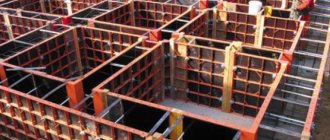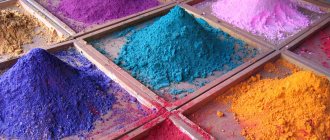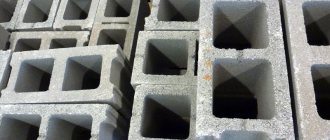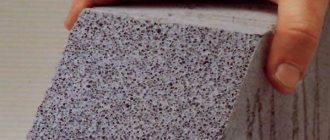Foam is a structure consisting of bubbles of air or other gas and films of an aqueous solution. The main characteristic of fire-fighting foam is its expansion ratio, that is, the ratio of the volume of foam to the volume of the aqueous solution from which it is obtained. There are foams of low (up to 20), medium (from 21 to 200) and high (over 200) expansion. To generate each type of foam, there are “its own” types of barrels and generators. Low expansion foam is used primarily for surface extinguishing. Medium expansion foam is suitable for surface and volumetric extinguishing. High expansion foam is used for extinguishing only by volume. Extinguishing a flame with foam occurs primarily by cooling the burning surface and isolating it from air oxygen.
The principle of operation of any foam agent for extinguishing fires is based on isolating the burning surface from access to oxygen due to the spreading of foam.
Foaming agents are made on the basis of synthetic surfactants (surfactants) or South Africa of natural origin. They are concentrated aqueous solutions; to generate foam they are diluted with water in a given ratio. As a rule, foam concentrates contain certain additives that give them the desired and/or standardized parameters. Now more details.
What is a fire extinguishing foam agent?
PO is a component of foam. POs are presented in the form of a saturated mixture of surface-active elements (surfactants) capable of producing a working foam-forming solution.
A foaming agent used to fight fires is called a concentrate. The concentrate consists of water, surfactants and additives, thanks to which the resulting foam becomes frost-resistant, hydrostatic, anti-corrosion, and heat-resistant.
A foam generator produces air-mechanical foam or a wetting solution, which is subsequently used to localize fires.
The ability of fire foam to interact with flammable substances depends on the chemical structure and composition of the surfactant.
For which fires are foam concentrates used?
Depending on the area of application, foam concentrate is divided into software:
- for intended purpose:
- The target orientation of the foam former has more capabilities and is used when extinguishing fires of petroleum products and fuels and lubricants. When sea salt is added to the concentrate, a frost-resistant mixture is obtained that can fight large fires in severe frosts.
- general focus:
- General purpose foam concentrates are usually used to extinguish fires of melting materials, solid and liquid materials, and fuels and lubricants.
- film-forming:
- Film-forming software is used during the combustion of hydrocarbon fuels or fires in tanks.
Types and chemical composition of foaming agents
Software can be conditionally divided into groups taking into account their purpose, method of formation and structure.
Depending on the available surfactant base, the foam former is divided into groups:
- protein (protein) (P);
- synthetic (hydrocarbon type) (C);
- fluoroprotein (FP);
- fluorosynthetic film-forming agent (FS).
Depending on the nature of the surfactant:
- statistically hydrocarbon;
- protein;
- fluorine-containing.
Depending on the method of formation, foam formers are divided into types:
- air-mechanical;
- bubbling;
- jet;
- chemical (condensation).
Fire-fighting foaming agent consists of specialized surfactants and additives. After use, the software should decompose. Based on the speed of the decomposition process, they are divided into:
- quickly degradable;
- moderately degradable;
- slowly decomposes;
- very slowly decomposed.
The foam structure is divided into:
- coarse;
- highly dispersed.
By frequency, foam is divided into:
- high-fold;
- foam emulsion;
- average multiple;
- low-fold.
In case of fires, all types of foam are used. You can change or obtain the required multiplicity using foam-generating installations or devices.
Designation of software types:
| Designation | Type |
| FFFP/AR |
|
| FFFP |
|
| FP/AR |
|
| FP |
|
| AFFF/AR-LV |
|
| AFFF/AR |
|
| AFFF |
|
Used to extinguish flammable (oxygenated) liquids (PO density - from 1000 to 1200).
| Designation | Type |
| S/AR |
|
| S |
|
| W.A. |
|
additional characteristics
The best option is to use a fluorinated surfactant to create low expansion foam. Such foam will have excellent abilities that will prevent it from mixing with flammable materials, but will help to spread over the surface of petroleum products and create a thin film of water, thanks to which the access of oxygen to the source of fire will be blocked and it will be quickly extinguished.
Due to the fact that foam can extinguish fires of certain classes, foam concentrates can be divided into:
- Software used to extinguish fires classified as category A;
- Software used to extinguish class B fires.
As mentioned earlier, the composition of the foam concentrate consists almost entirely of water, so there is such a division:
- foam concentrates, in which drinking water is used to form foam;
- foam concentrates, in which fire extinguishing foam is obtained using hard water;
- foaming agents in which foam is formed due to sea water.
Foaming agents must decompose after their use, therefore, depending on the speed of this process, according to GOSTs, they are divided:
- for fast decomposition;
- moderately degradable;
- slow decomposition;
- very slowly decomposing.
How much foam concentrate should a fire department have?
- The fire department must have a supply of software of at least 10 m³. The calculation is based on the actual extinguishing time spent on one fire.
- It should be counted according to the largest values. The presence of the solution in the garrison should be calculated based on its use three times per fire extinguishing event.
- To store the foam concentrate, the fire department must have two 10 m³ tanks. The stock must be available for prompt delivery to the source of the fire.
- If you take a ZIL-based tanker with a volume of 150 liters, it will only last for seven minutes, while the set supply time is at least 10 minutes.
The water supply should also be taken into account, since its consumption depends on the intensity of the solution supply during the free development of the fire.
Characteristic
| BY 1 | Aqueous solution of neutralized kerosene contact 84±3%, bone glue for foam resistance 5±1% synthetic ethyl alcohol or concentrated ethylene glycol 11±1%. The freezing temperature does not exceed -8 °C. It is the main foam-forming agent for producing air-mechanical foam of any expansion ratio. When extinguishing oils and petroleum products, the concentration of the aqueous solution of PO-1 is 6%. When extinguishing other substances and materials, use solutions with a concentration of 2–6%. |
| PO-3A | An aqueous solution of a mixture of sodium salts of secondary alkyl sulfates. Contains 26±1% active substance. The freezing temperature is not higher than – 3°C. When used, dilute with water in a ratio of 1: 1 using dosing equipment designed for foaming agent PO-1. To obtain foam, an aqueous solution with a concentration of 4–6% is used. |
| PO-6K | Produced from acid tar by sulfonation of hydrotreated kerosene. Contains 32% active substance. Freezing temperature is not higher than -3°C. To obtain foam when extinguishing oil products, use an aqueous solution with a concentration of 6%. In other cases, the concentration of the aqueous solution may be less. |
| "Sampo" | Consists of a synthetic surfactant (20%), stabilizer (15%), antifreeze additive (10%) and a substance that reduces the corrosive effect of the composition (0.1%). Pour point – 10°C. To obtain foam, use an aqueous solution with a concentration of 6%. They are used for extinguishing oil, non-polar petroleum products, industrial rubber products, wood, fibrous materials, in stationary fire extinguishing systems and for the protection of technological installations. |
The influence of the composition of the foaming agent on the properties of the foam
The main indicators that firefighters need to take into account during fire extinguishing are: the purpose of the foaming agent (general, targeted or film-forming) and the multiplicity.
The procedure for using foam concentrates when extinguishing fires
Instructions on the procedure for use were developed by VNIIPO EMERCOM of the Russian Federation. It presents the technical requirements, classification and purpose of the software:
- Solutions are prepared in advance or obtained using foam mixers.
- To obtain a low-expansion foam composition, trunks or sprinklers are used.
- Medium expansion foam solvent is also used for large fires.
- Low expansion foam composition is used in case of fire of fuels and lubricants and petroleum products. They also cool the equipment.
- Rejected software and general foam formers are used as wetting agents when fighting fires of fuel and lubricant products.
- Special purpose foam formers are used in fires of hydrocarbon liquid materials.
- The high-expansion foam composition is suitable for extinguishing large areas.
- The amount of foam concentrate used depends on the flammable substances and the type of foam concentrate.
- Software with increased fire extinguishing ability is used in case of fire of flammable and fire-hazardous objects and objects.
Calculation of foam concentrate consumption
The consumption of software depends on the intensity of the solution dispensed per m² of fire area and the time spent on extinguishing. The volume of the foaming solution depends on the volume of water and software in the container.
Vр = Vв + Vп
- Vр – volume of solution;
- Vв – quantity (volume) of water;
- Vп – software volume.
To calculate the consumption, the percentage of concentration of the foam former is taken into account. So for one liter of water foaming agent you will need:
- At 4% – 24 liters;
- At 6% – 15.7.
These values will represent the compliance factor (Kv(N)).
When making calculations, you need to know what will end up in the container first when extinguishing a fire: water or foaming agent. To determine the coefficient (Kv), the calculation formula is taken:
Kv = Vv / Vp
If the calculated Kv is greater than Kv(N), then the foam will run out earlier and the calculation must be carried out using it. If Kv is less than Kv(N), then the calculation is based on water, since it will run out first.
Vр = Vп * Кв + Vп (if Кв > Кв(N)) (I) Vр = Vв / Кв + Vв (if Кв < Кв(N)) (II)
When the coefficients are equal to Kv = Kv(N), the calculation can be carried out using any formula.
If a fire hydrant is used to extinguish a fire, it should be calculated using formula (I).
Example 1:
- PO concentration (%) – 6;
- Tank volume (l) for water – 2000;
- Capacity volume for software (l) – 120.
Let's calculate Kv = 2000 / 120 = 16.6. This value is greater than Kv(N) / 16.6 >15.7, which means that the extinguishing software will end earlier. Therefore, the calculation is carried out according to formula (I).
Vр = Vп * Кв + Vп = 120 * 15.7 + 120 = 2004 liters
Example 2:
- PO concentration (%) – 4;
- Tank volume (l) for water – 7000;
- Capacity volume for software (l) – 500.
We calculate Kv = 7000 / 500 = 14. Since 14 <24, we calculate according to formula (II):
Vр = Vв / Кв + Vв = 7000 / 24 + 7000 = 7292 liters
Compositions
Due to the fact that all foaming agents have different compositions, and, consequently, areas of use, they are divided into the following types:
- Software that forms a film, and therefore they are used when extinguishing flammable liquids that are insoluble in water, by supplying low-expansion foam either on top of oil and petroleum products, or directly into the layer of the burning substance;
- foam concentrates that extinguish the fire of liquids that are flammable and do not dissolve in water. For such extinguishing, a soft supply of low-expansion foam occurs;
- foam concentrates for special purposes, which eliminate the fire of flammable liquids by supplying medium foam;
- general-purpose foam concentrates used to extinguish flammable materials, and for these purposes medium-expansion foam is used, as well as solid combustible materials using low-expansion foam or an aqueous solution of a wetting agent;
- foaming agents, which are used as a basis for extinguishing flammable liquids using high-expansion foam;
- Software that is designed to extinguish flammable liquids that are either soluble in water or not soluble.
Accounting and write-off of foam concentrate in fire departments
When the foam former is accepted into the warehouse, the quality of the product and the condition of the container in which the composition was delivered are checked.
The fire-fighting foaming agent is stored in closed containers at a temperature not lower than -5 and not higher than +40°C. Compliance with the temperature regime allows you to keep the product intact and, if necessary, use it immediately.
Optimal conditions for maintaining performance: +20°C.
- It is allowed to store software in steel containers, but when the metal corrodes, the quality of the foam former deteriorates and the shelf life is reduced.
- Expired foam concentrates must be regenerated. They are further used as a wetting agent or detergent for cleaning and degreasing metal surfaces and contaminated surfaces, such as railway tanks.
- Biological foaming substances are allowed to be disposed of and discharged into water sources, after diluting them with a large amount of water.
- “Hard” software and fluorine-containing ones are burned in special furnaces at chemical plants, or taken to chemical waste sites.
Quality checking
Control is carried out both at the enterprise itself and by the end consumer. After checking the documents on the quality and condition of the product received at the warehouse, a sample is taken using a special technology. Tests are carried out in a fire laboratory of an accredited organization.
Only after receiving the results of samples meeting the required criteria, the batch (no more than 200 tons) is transferred to the fire department. When violations are revealed during the test, the report and complaint are sent to the address of the manufacturer where the product was purchased.
Foam concentrate storage standards
The shelf life and quality of the foam former depend on the production of the software.
- Store the foaming agent in closed containers made of polymer or stainless steel. Steel containers (carbon steel) are also suitable.
- Fluorinated foam formulations are stored exclusively in a closed polymer container or in a stainless steel container. If this is not available, the solution is stabilized and the quality is checked once a year.
- You can maintain performance properties by adding special chemical components to the foam solution.
- It is prohibited to use reinforced concrete containers if they are without a polymer coating. It is not allowed to store solutions for more than a month in steel containers if the software does not contain a stabilizer.
- Aqueous solutions in glass or plastic containers are stored for no more than three years.
Cooking technology
The work is carried out in two stages. First, prepare the base - rosin soap. For foam concentrate to prepare 1 m³ of cellular concrete you will need: caustic soda (caustic soda) - 0.016 kg, and gum rosin - 0.06 kg. Then carpentry bone glue is added to the composition to increase viscosity and durability - 0.063 kg.
Soda is diluted with water to a solution density of 1.2 kg/dm³. This mixture is boiled and gradually crushed (no more than 5 mm) rosin is added there. For 1 liter of soda solution you will need 1.5 kg of rosin. The mixture is kept in a boiling water bath for 1.5 to 2 hours, stirring constantly until the components are completely dissolved.
Wood glue (tile glue) is prepared in advance. It is pre-crushed and filled with water for a day (1:10). By heating the composition to 60 °C, stirring until the particles are completely dissolved. After the components are ready, the cooled soap solution is poured into the glue in small portions and mixed. The ratio of glue and “soap” solutions is 6:1.
Areas of use and benefits
Foam is considered one of the most effective ways to extinguish fire. But there are some limitations that you need to know about:
- Since foam is an aqueous solution, it cannot be used to extinguish a fire on electrical equipment connected to the electrical network.
- It does not extinguish flammable materials.
- There is a category of foam that cannot be used in conjunction with fire extinguishing powders.
- When gases and cryogenic liquids are burning, foam is ineffective.
The advantages of foam concentrates are as follows:
- this is the most effective fire extinguishing agent for class A and B fires;
- thanks to this means, not only the fire is extinguished, but also the source of the fire is cooled;
- using foam, a vapor barrier is created to prevent ignited vapors from escaping beyond the protected object. For example, the surface of tanks is covered with such foam in case a fire occurs in a nearby tank, the fire does not spread to the adjacent tank;
- Thanks to the foam, spilled oil products are quickly and efficiently extinguished. The best option is to eliminate the leak of oil products by closing the valve. If this is not possible, the flow is blocked by foam, which is applied to the fire site and creates a protective film on the surface of the flammable liquid;
- foam devices are used to localize fire in large containers containing flammable liquids;
- To get foam, the quality of the water does not matter. You can use hard, fresh or soft water.
This is interesting: Autonomous fire extinguishing systems: types and requirements for them
Groups of foam concentrates
A certain type of foam concentrate must be used in case of various fires, so they differ in their purpose:
- Synthetic hydrocarbon foam concentrates for general purposes.
- Foaming agents with specific purposes.
- Fluorine-containing synthetic film-forming films for specific purposes.
- Fluorine-containing synthetic film-forming agents used in extinguishing flammable liquids that dissolve in water.
- Protein plan.
The first group of foam concentrates is used to form fire extinguishing foam and wetting solutions. This is the most common group, due to its price and raw material availability, good performance, and modern technology. They are less effective than targeted foaming agents. The composition of such concentrates includes hydrocarbon anionic surfactants with an additive in the form of an anti-corrosion component.
How do you extinguish petroleum products?
Foam made from mixtures of substances of various compositions, which have received a common conceptual name - fire foaming agents. Why are they more effective than water? Everything is explained simply:
- Light fractions of oil, other hydrocarbon-based organic substances produced at industrial enterprises - alcohols, oils, solvents and their mixtures are much lighter than water.
- During a fire, they burn on its surface, spreading in a thin layer over the largest possible area, most often limited only by building structures, process tanks, natural barriers, as well as the volume of oil products bottling.
- Foam applied to extinguish a fire, unlike water, due to its low specific gravity and physical properties, does not sink, like water, under a layer of burning liquid organic matter.
- On the contrary, foam quickly spreads and spreads over the surface of flaming oil products, interrupting contact with the oxygen in the air necessary to continue the combustion process.
Oil extinguishing often surprises eyewitnesses. The indomitable flame rising above the bottling of hydrocarbon products, the technological tank, the burning equipment from a passenger car to a railway tank, is powerless against what the fire brigade employees supplied to such a simple, at first glance, thing - foam. Read about how the foam fire extinguisher was first discovered in this article.











